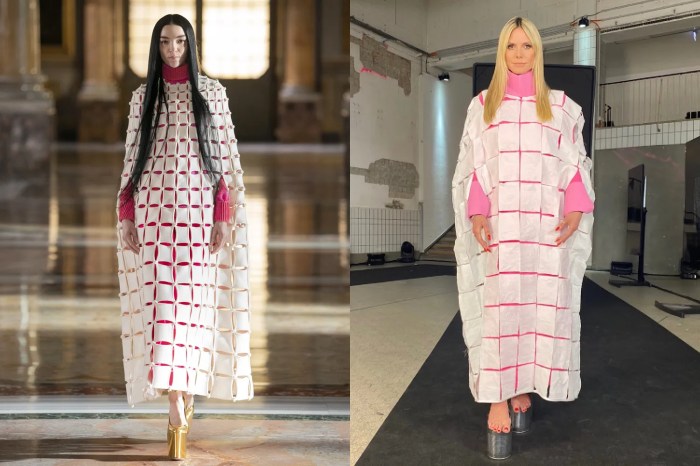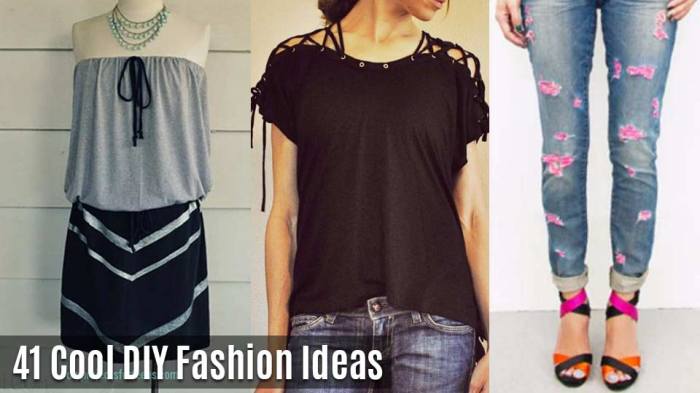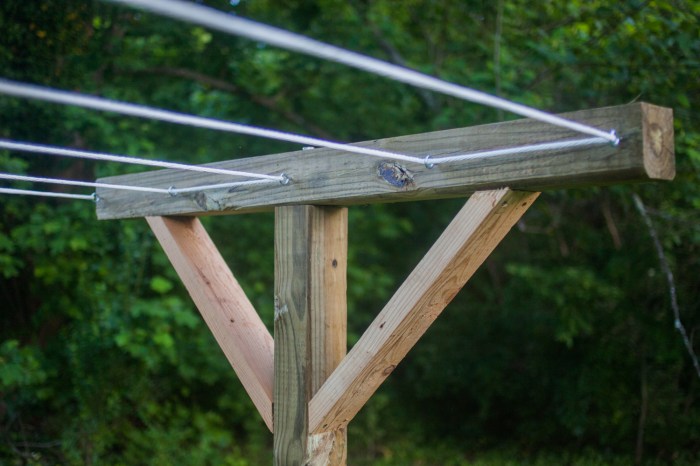Clothing Line DIY: Imagine crafting your own unique style, breathing life into designs that reflect your personal vision, and turning your passion for fashion into a tangible reality. This is the exciting world of DIY clothing lines, where creativity meets entrepreneurship, and the possibilities are endless.
From sketching initial ideas to sourcing fabrics and mastering sewing techniques, creating your own clothing line is a journey that empowers you to express yourself, build a brand, and potentially even launch a successful business. This guide will equip you with the knowledge and inspiration to embark on this rewarding adventure.
The Appeal of DIY Clothing Lines
In an era where individuality and self-expression are celebrated, the allure of creating your own clothing line is undeniable. DIY clothing lines offer a unique platform for individuals to translate their creative visions into tangible garments, fostering a sense of personal style and entrepreneurial spirit.
Creative Expression and Personal Style
The ability to design and create garments that reflect your unique aesthetic is a powerful form of self-expression. DIY clothing lines allow individuals to break free from the constraints of mass-produced fashion and embrace their own personal style. This freedom to experiment with colors, textures, and silhouettes empowers individuals to express their individuality and stand out from the crowd.
Entrepreneurial Opportunities
Starting a DIY clothing line presents a compelling opportunity for individuals to pursue their entrepreneurial aspirations. By designing, producing, and marketing their own clothing, individuals can gain valuable experience in various aspects of business, including product development, marketing, and sales. This hands-on experience can lead to the development of valuable skills and potentially pave the way for future business ventures.
Examples of Successful DIY Clothing Lines
The DIY clothing movement has produced numerous successful brands that have made a significant impact on the fashion industry. One notable example is the brand “House of Sunny,” founded by designer Sunny Jeon. House of Sunny gained popularity for its unique designs and playful approach to fashion, attracting a loyal following and garnering recognition in the fashion world. Another successful DIY brand is “Reformation,” known for its sustainable and ethically produced clothing. Reformation’s commitment to ethical practices and its unique aesthetic have resonated with environmentally conscious consumers, contributing to its significant growth and influence.
Conceptualizing Your Clothing Line: Clothing Line Diy

Conceptualizing a clothing line is a creative and exciting process. It involves shaping your vision, understanding your target audience, and defining the unique character of your brand. This stage sets the foundation for your entire DIY clothing line.
Defining Your Target Audience
Identifying your target audience is crucial for developing a successful clothing line. Understanding their needs, preferences, and lifestyles will guide your design decisions and marketing strategies.
- Demographics: Consider factors like age, gender, location, income, and occupation. This information helps you understand your target audience’s purchasing power and lifestyle choices.
- Psychographics: Explore their values, interests, attitudes, and motivations. This deeper understanding reveals what drives their fashion choices and what resonates with them.
- Lifestyle: Consider their daily activities, hobbies, and social circles. This helps you tailor your designs to their needs and create clothing that fits seamlessly into their lives.
Exploring Design Aesthetics and Themes
Once you have a clear understanding of your target audience, you can start exploring design aesthetics and themes that resonate with them. This involves researching current fashion trends, experimenting with different styles, and creating a visual identity for your brand.
- Trend Research: Keep an eye on current fashion trends and popular styles. Identify emerging trends that align with your target audience’s preferences and incorporate them into your designs.
- Style Inspiration: Draw inspiration from various sources like art, music, nature, and historical fashion movements. Experiment with different silhouettes, textures, colors, and prints to create unique and visually appealing designs.
- Brand Identity: Develop a cohesive brand identity that reflects your clothing line’s unique character. This involves choosing a name, logo, color palette, and overall aesthetic that communicates your brand’s values and message.
Developing a Unique Concept
A unique concept is the heart of your clothing line. It sets you apart from competitors and attracts customers who connect with your brand’s story and values.
- Storytelling: Create a compelling narrative that connects your clothing line to your target audience’s interests and aspirations. This could involve telling a personal story, highlighting a social cause, or promoting a specific lifestyle.
- Sustainability: Consider incorporating sustainable practices into your clothing line, using eco-friendly materials and ethical production methods. This resonates with environmentally conscious consumers and adds value to your brand.
- Community Building: Engage with your target audience through social media and events, fostering a sense of community around your brand. This creates a loyal following and strengthens your brand’s identity.
Design and Development

The design and development phase is the heart of your DIY clothing line. This is where your vision takes shape, transforming ideas into tangible garments. It involves a creative process that blends artistic expression with technical skill, resulting in unique and wearable pieces.
Sketching
Sketching is the initial stage of design, where you translate your ideas into visual form. This allows you to explore different concepts, experiment with silhouettes, and refine your aesthetic.
- Brainstorming and Inspiration: Begin by gathering inspiration from various sources, such as fashion magazines, art, nature, or even everyday objects. Explore different styles, colors, textures, and patterns that resonate with your vision.
- Developing Concepts: Once you have a general idea, start sketching rough Artikels of your designs. Don’t worry about perfection at this stage; focus on capturing the essence of your vision. Use basic shapes, lines, and proportions to represent the garment’s silhouette, neckline, sleeves, and other key features.
- Refining Sketches: After exploring several concepts, choose the ones you like best and refine them. Add details, such as embellishments, pockets, or closures. Experiment with different color palettes and fabric textures to see how they affect the overall look.
Pattern Making, Clothing line diy
Pattern making is the process of creating a template that serves as a guide for cutting and sewing your garments.
- Understanding Basic Pattern Shapes: Familiarize yourself with basic pattern shapes, such as rectangles, squares, and circles, which form the foundation of most garment patterns.
- Using Drafting Tools: Use drafting tools, such as rulers, protractors, and French curves, to create accurate and precise patterns. These tools help ensure that your garments fit well and have a professional finish.
- Creating a Pattern: Based on your sketches, create a pattern for each garment piece, such as the bodice, sleeves, and skirt. This involves transferring the design details onto pattern paper and adjusting the shapes to create a well-fitting template.
Fabric Selection
Fabric selection is crucial for the overall look and feel of your garments.
- Considering Fabric Properties: Research different fabric types, understanding their properties, such as drape, weight, texture, and breathability. These properties will influence the garment’s fit, comfort, and overall aesthetic.
- Matching Fabric to Design: Choose fabrics that complement your designs and target audience. For example, a flowing silk would be suitable for a formal dress, while a sturdy cotton would be ideal for a casual t-shirt.
- Exploring Fabric Options: Explore a wide range of fabrics, from natural fibers like cotton and linen to synthetic fibers like polyester and nylon. Consider sustainable and ethical options, such as organic cotton or recycled materials.
Creating Original Designs
Developing original designs is a key aspect of establishing a unique brand identity.
- Drawing Inspiration from Your Surroundings: Look for inspiration in everyday life, nature, art, music, or even your own personal experiences. This can help you create designs that are both unique and relatable.
- Experimenting with Shapes and Silhouettes: Play with different shapes and silhouettes, such as A-line, empire waist, or peplum. Experiment with proportions, layering, and volume to create visually interesting designs.
- Incorporating Unique Details: Add unique details to your designs, such as interesting seams, decorative stitching, or unexpected embellishments. These details can help your garments stand out and make them more memorable.
Incorporating Personal Style
Your personal style is an essential element of your clothing line, reflecting your individuality and aesthetic preferences.
- Identifying Your Style: Take time to identify your personal style. What colors, textures, and patterns do you gravitate towards? What kind of clothing makes you feel confident and comfortable?
- Expressing Your Vision: Use your personal style as a guide for designing your clothing line. Let your creativity flow and don’t be afraid to experiment with different ideas. Your unique perspective will set your line apart.
- Evolving Your Style: As you gain experience, your style may evolve. Embrace this growth and continue to explore new ideas and techniques. This ongoing evolution will keep your designs fresh and exciting.
Sourcing Materials and Production

Bringing your clothing line to life requires a careful selection of materials and a well-planned production process. This section delves into the intricacies of sourcing materials, negotiating prices, and exploring various production methods.
Sources for Fabrics, Trims, and Other Materials
Finding the right materials is crucial for achieving the desired look, feel, and quality of your clothing. There are several avenues to explore when sourcing fabrics, trims, and other materials:
- Fabric Wholesalers and Distributors: These companies offer a wide variety of fabrics, often at discounted prices compared to retail stores. Online platforms and local fabric markets can provide access to a vast selection of materials.
- Fabric Mills: Direct sourcing from fabric mills can provide access to unique fabrics and potentially better prices, especially for larger orders.
- Online Marketplaces: Websites like Etsy, Amazon Handmade, and Alibaba offer a diverse range of fabrics, trims, and other materials from independent sellers and manufacturers.
- Local Fabric Stores: Local fabric stores provide a more hands-on experience, allowing you to touch and feel the materials before making a purchase.
- Sustainable and Ethical Suppliers: For eco-conscious brands, sourcing from suppliers who prioritize sustainability and ethical practices is essential. Look for certifications like GOTS (Global Organic Textile Standard) and OEKO-TEX.
Sourcing Materials and Negotiating Prices
The process of sourcing materials involves identifying suppliers, evaluating their offerings, and negotiating prices. Here’s a breakdown of key steps:
- Research and Identify Suppliers: Utilize online directories, trade shows, and industry publications to find potential suppliers. Consider factors like location, reputation, minimum order quantities, and lead times.
- Request Samples and Quotations: Contact suppliers to request samples and price quotes for the materials you require. Be specific about your needs, including fabric type, color, quantity, and desired delivery date.
- Evaluate Suppliers and Materials: Compare samples and quotations from different suppliers. Consider factors like quality, price, lead times, and communication responsiveness.
- Negotiate Prices: Once you’ve identified your preferred suppliers, negotiate prices based on your order volume, payment terms, and potential future business.
- Secure Contracts and Place Orders: Formalize your agreements with suppliers through contracts that Artikel terms, conditions, payment schedules, and delivery expectations.
Production Methods
Choosing the right production method depends on your design, budget, and desired production scale. Here’s a comparison of common methods:
- Sewing: Sewing is a versatile production method suitable for various garments, from simple t-shirts to complex dresses. It involves stitching fabric pieces together using sewing machines.
- Knitting: Knitting involves creating fabric by interlacing loops of yarn using needles. This method is suitable for producing sweaters, scarves, and other garments with a textured appearance.
- Printing: Printing involves transferring designs onto fabric using various techniques, including screen printing, digital printing, and heat transfer printing. This method allows for creating intricate patterns and graphics on garments.
The DIY clothing line landscape is brimming with creative individuals who are transforming their passions into thriving businesses. By embracing the principles of design, production, marketing, and ethical practices, you can create a clothing line that not only reflects your unique style but also resonates with a community of fashion enthusiasts. So, unleash your creativity, embrace the entrepreneurial spirit, and embark on the journey of building your dream clothing line.
Creating your own clothing line can be a fun and rewarding experience, but it’s important to be mindful of your budget. Just like adjusting the metformin dosage for optimal results, you’ll need to fine-tune your clothing line’s pricing and production methods to ensure its success. Remember, a well-crafted clothing line is like a well-tailored garment – it needs to fit your vision perfectly!
